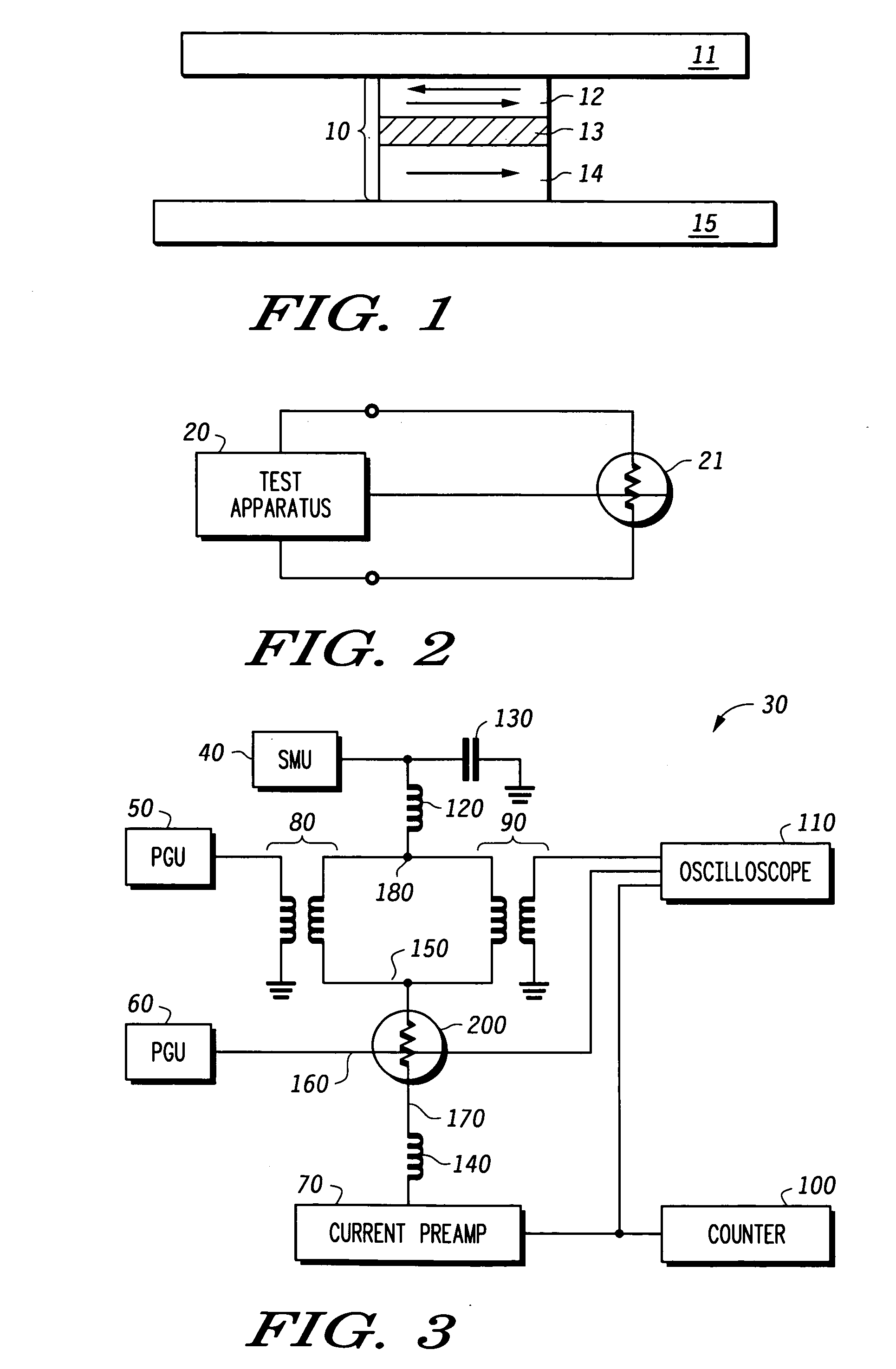Apparatus for pulse testing a MRAM device and method therefore
a pulse and mram technology, applied in semiconductor devices, digital storage, instruments, etc., can solve the problems of memory failure, slow program and erase times, and limited ability to write or store charge in floating oxides
- Summary
- Abstract
- Description
- Claims
- Application Information
AI Technical Summary
Problems solved by technology
Method used
Image
Examples
Embodiment Construction
[0015] The following detailed description is merely exemplary in nature and is not intended to limit the invention or the application and uses of the invention. Furthermore, there is no intention to be bound by any expressed or implied theory presented in the preceding technical field, background, brief summary or the following detailed description.
[0016] A typical architecture of a magnetoresistive random access memory (MRAM) comprises an array of magnetic tunnel junction (MTJ) cells and CMOS circuitry to read and write to the memory array. Each MTJ cell is located at a unique intersection of a particular bit line and digit line in the memory array. The bit lines and digit lines respectively correspond to column and row lines of more common memory types. Programming of a MTJ cell is achieved by passing current pulses through the bit line and the digit line that intersect at the MTJ cell. The magnetic fields generated by the current pulses in the bit line and the digit line are cou...
PUM
 Login to View More
Login to View More Abstract
Description
Claims
Application Information
 Login to View More
Login to View More - R&D
- Intellectual Property
- Life Sciences
- Materials
- Tech Scout
- Unparalleled Data Quality
- Higher Quality Content
- 60% Fewer Hallucinations
Browse by: Latest US Patents, China's latest patents, Technical Efficacy Thesaurus, Application Domain, Technology Topic, Popular Technical Reports.
© 2025 PatSnap. All rights reserved.Legal|Privacy policy|Modern Slavery Act Transparency Statement|Sitemap|About US| Contact US: help@patsnap.com



